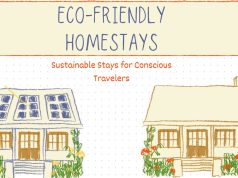The Allure of the Open Road: Is the Digital Nomad Life for You?
Imagine swapping your monotonous morning commute for a sunrise stroll on a beach in Bali. Picture replacing the drone of office air conditioning with the buzz of a vibrant Lisbon café. This isn’t a far-fetched fantasy; it’s the daily reality for a growing global community of digital nomads. These are individuals who have leveraged technology to break free from the constraints of a physical office, blending work, travel, and life into one seamless adventure.
But behind the picturesque Instagram feeds lies a world of careful planning, discipline, and strategic decision-making. The leap from a stable 9-to-5 to a life of location independence can feel daunting, like staring at a map with no clear route. Where do you even begin?
Consider this article your comprehensive roadmap. We’re going to demystify the process, breaking it down into actionable steps. From securing a remote income stream to navigating the complexities of visas, finances, and logistics, this guide will equip you with the knowledge and confidence to turn your digital nomad dream into a well-executed reality.
Section 1: What is a Digital Nomad? Debunking the Myths
Before we dive into the “how,” let’s clarify the “what.” A digital nomad is someone who works remotely, using technology to perform their job from anywhere in the world. The key ingredients are a reliable income source and a strong Wi-Fi connection. However, the lifestyle is often romanticized, and it’s crucial to understand the reality.

Myth vs. Reality
- Myth: It’s a permanent vacation. Reality: It’s a work-life integration. Deadlines are real, client calls still happen (often across tricky time zones), and you must be highly self-disciplined to stay productive when a beautiful beach is calling your name.
- Myth: It’s incredibly cheap and easy. Reality: While you can live affordably in many parts of the world, there are significant up-front costs: flights, visas, tech gear, and a crucial financial safety net. It requires meticulous budgeting.
- Myth: It’s a lonely existence. Reality: Loneliness can be a challenge, but the global nomad community is vast and welcoming. With co-working spaces, online groups, and local meetups, it’s easier than ever to build connections, but it requires proactive effort.
Section 2: The Cornerstone: How to Secure Remote Income
Your ability to travel is directly tied to your ability to earn. This is the most critical piece of the puzzle. There are three primary paths to securing a location-independent income.

Path 1: Find a Fully Remote Job
This is often the most stable option, providing a consistent salary and, sometimes, benefits. Companies are more open to remote work than ever before.
- Where to Look: Scour job boards specifically for remote positions. Top sites include Remote.co, We Work Remotely, FlexJobs, and even LinkedIn with its “Remote” filter.
- Tailor Your Resume: Highlight skills essential for remote success: self-motivation, excellent written communication, time management, and proficiency with collaboration tools like Slack, Asana, and Zoom.
- Pro-Tip: If you love your current company, consider building a detailed proposal to transition your role to a remote one. Suggest a trial period to prove your productivity won’t suffer.
Path 2: Become a Freelancer
Freelancing offers the ultimate flexibility but requires more hustle. You are your own boss, which means you’re also responsible for sales, marketing, and accounting.
- In-Demand Fields: Web development, graphic design, digital marketing, SEO, content writing, virtual assistance, and video editing are all fields ripe with freelance opportunities.
- Build Your Portfolio: Before you leave, build a strong portfolio of work. Take on small projects, even for free, to showcase your skills.
- Find Clients: Platforms like Upwork and Fiverr are good starting points, but building a personal brand and network through LinkedIn or a professional website will lead to higher-quality, long-term clients.
Path 3: Start an Online Business
This path has the highest risk but also the highest potential reward. It’s a long-term game that requires patience and entrepreneurial spirit.
- Business Models: Consider e-commerce (dropshipping or selling your own products), creating and selling online courses, affiliate marketing, coaching/consulting, or building a monetized blog or YouTube channel.
- Start Small: It’s wise to start your online business as a side hustle while you still have a stable income. Wait until it’s generating consistent revenue before you buy that one-way ticket.
Section 3: Financial Freedom: Mastering Your Money for a Life Abroad
Financial planning is the bedrock of a sustainable nomad life. Running out of money is the number one reason nomads have to end their journey prematurely.

The Pre-Departure Budget & Safety Net
Before you go anywhere, you need a financial cushion. This isn’t just for emergencies; it’s your peace of mind.
- One-Time Costs: Tally up all initial expenses: flights, first month’s rent/deposit, travel insurance, essential tech gear, visas, and vaccinations.
- The Emergency Fund: The golden rule is to have at least 3-6 months of estimated living expenses saved in an easily accessible account. This is your “runway.” If your income dries up, this fund gives you time to find new work or book a flight home without going into debt.
Managing Money on the Road
- Research Cost of Living: Use websites like Nomad List and Numbeo to get a realistic idea of monthly expenses in your target destinations. Remember to budget for fun, not just survival.
- Track Everything: Use a budgeting app like Trail Wallet, Mint, or You Need A Budget (YNAB) to monitor your spending. This is crucial for staying on track.
- Banking for Nomads: Open accounts with banks that are traveler-friendly. Look for features like no foreign transaction fees and ATM fee reimbursements. Services like Wise (formerly TransferWise), Revolut, and Charles Schwab (for US citizens) are popular choices.
- Tackle Taxes: Tax laws for nomads are complex and vary by nationality. It is highly recommended to consult with a tax professional who specializes in expatriate or location-independent taxes. Understand concepts like tax residency and any potential foreign earned income exclusions.
Section 4: The Logistics of Liberation: Your Pre-Flight Checklist
With income and finances sorted, it’s time to handle the practicalities of leaving your old life behind.
Visas and Legality
This is a critical, non-negotiable step. Overstaying a visa can result in fines, deportation, and bans from re-entering a country. Always check the official embassy or consulate website for the most accurate information.
- Tourist Visas: Many nomads start by using tourist visas, staying for the allowed duration (typically 30-90 days) and then moving to a new country (a “visa run”). Be aware that working on a tourist visa is often a legal gray area.
- Digital Nomad Visas: A growing number of countries (like Portugal, Estonia, and Costa Rica) are offering specific visas for remote workers. These provide a legal framework to live and work in a country for an extended period, usually one year or more.
Global Health Insurance
Your domestic health insurance plan will likely not cover you abroad. Getting dedicated travel medical insurance is essential. It protects you from catastrophic costs in case of a serious accident or illness. Popular providers for nomads include SafetyWing and World Nomads. Read the policies carefully to understand what is and isn’t covered.
Downsizing and Packing
Embrace minimalism. The less you own, the freer you are.
- The Purge: Go through your belongings and categorize them: keep (in storage), sell, donate, and discard. It’s liberating and can add a nice boost to your travel fund.
- Pack Smart: Many long-term travelers swear by the “one bag” philosophy. Invest in a high-quality travel backpack (40L is a common size). Pack versatile, layerable clothing made from quick-drying fabrics like merino wool. Remember, you can buy almost anything you need abroad.
- Tech Essentials: Your tech is your lifeline. Don’t skimp here. Essential gear includes a reliable laptop, a universal power adapter, a portable power bank, an unlocked smartphone, and noise-canceling headphones for focusing in loud environments.
Section 5: Where to Go? Choosing Your First Nomad Base
With the world as your oyster, choosing the first destination can be overwhelming. A smart choice can set a positive tone for your entire journey.
Key Factors to Consider
- Cost of Living: Start somewhere affordable to ease financial pressure while you adjust.
- Internet Reliability: Fast, stable Wi-Fi is non-negotiable for remote work.
- Community: Choose a place with an established nomad or expat community to make finding friends easier.
- Safety: Research the general safety of a city, especially if you are a solo traveler.
- Time Zone: If your work requires you to sync with a team in a specific country, a compatible time zone is a major advantage.
Popular Nomad Hotspots for Beginners
- Chiang Mai, Thailand: The classic starter city. Incredibly low cost of living, fantastic food, and a huge, supportive nomad community.
- Lisbon, Portugal: Beautiful city with great infrastructure, a vibrant tech scene, and access to the rest of Europe.
- Medellín, Colombia: Known as the “City of Eternal Spring” for its perfect climate. It’s affordable, has a thriving community, and is in a US-friendly time zone.
- Bali, Indonesia (Canggu/Ubud): A hub for wellness, surfing, and creativity with a massive concentration of co-working spaces and cafes.
Consider slow travel—staying in one place for 1-3 months. It helps prevent travel burnout, allows you to build deeper connections, and is often more cost-effective than moving every few weeks.
Section 6: Thriving on the Road: Mastering the Nomad Lifestyle
Getting there is only half the battle. The real art is building a sustainable and fulfilling life on the move.
Build a Routine
Structure is your best friend. When your environment is constantly changing, your routine provides stability. Designate specific work hours, schedule time for exercise, and make plans for exploration. This separation of “work time” and “play time” is crucial for avoiding burnout.
Combat Loneliness & Find Your Tribe
Proactively seek out community. Don’t wait for friends to find you. Join a co-working space, attend events on Meetup.com, connect with people in local expat Facebook groups, take a language class, or join a local sports club. These shared activities are the fastest way to forge meaningful connections.
Prioritize Health & Wellness
It’s easy to let your health slip while traveling. Make a conscious effort to eat nutritious food, stay hydrated, and find a form of exercise you enjoy. Equally important is your mental health. Acknowledge that culture shock, homesickness, and decision fatigue are real. Stay connected with friends and family back home and don’t be afraid to take a day off to simply rest and recharge.
Conclusion: Your Adventure Awaits
Becoming a digital nomad is a marathon, not a sprint. It’s a journey of continuous learning, adaptation, and self-discovery. By breaking down the process into manageable steps—securing income, planning your finances, handling logistics, and consciously building a life you love—you transform an intimidating dream into an achievable goal.
The path won’t always be easy, but the rewards—unparalleled freedom, personal growth, and a lifetime of stories—are immeasurable. The world is waiting. The first step, however small, is yours to take.
What’s the first destination on your digital nomad dream list? Share it in the comments below!











